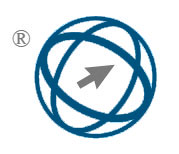Hybrid K-Nearest Neighbors Models with Metaheuristic Optimization for Predicting Undrained Shear Strength
Abstract
Around the world, soft soils can be found in many areas close to seas and rivers. These areas play an indispensable and crucial role in the development of government plans, especially in the population growth sector. Due to maintaining a weak shear power and vast settlement under the buildings, soft soils are considered problematic soil. The significant risks associated with building structures and infrastructures in soft soil are high, requiring engineers' extreme attention. It depends on undrained shear strength (USS) that the foundation of structures can bear in soft soil, and this factor vigorously controls the selection of soil improvement techniques. In recent years, there have been enhancements and extensions in the methodologies employed for estimating soil characteristics, including USS. These methods are divided into three main sections: Laboratory Testing, Field Testing, and Correlation with Other Soil Parameters. In recent research, data science techniques have created more reliable and accurate models for predicting USS. This study aims to apply the K-Nearest Neighbors (KNN) classifying method for predicting USS. Mountain Gazelle Optimizer (MGO) and Coronavirus Herd Immunity Optimizer (CHIO) appeal for developing hybrid models with KNN and facilitating accuracy enhancement. The dataset which utilized in this study contains four input variables including liquid limit (LL), plastic limit (PL), and sleeve friction (SF), overburden weight (OBW). Comparative analysis across all data phases reveals that the KNCH model, optimized using the CHIO, achieved superior predictive performance with the highest coefficient of determination (R² = 0.993), and the lowest values in root mean square error (RMSE = 85.19), mean squared error (MSE = 7256.15), normalized RMSE (NRMSE = 0.470), and scatter index (SI = 0.065). In contrast, the KNN model without optimization reported R² = 0.971, RMSE = 168.17, and SI = 0.132, while the KNMG model—optimized using the MGO—resulted in R² = 0.983, RMSE = 128.15, and SI = 0.101.
Full Text:
PDFReferences
J. Hartlén and W. Wolski, Embankments on organic soils. Elsevier, 1996.
J. M. Duncan and S. G. Wrigth, “Soil strength and slope stability, John Willey & Sons,” Inc., Hoboken, New Jersey, 297, 2005.
Z. Lechowicz and M. J. Sulewska, “Assessment of the Undrained Shear Strength and Settlement of Organic Soils under Embankment Loading Using Artificial Neural Networks,” Materials, 16(1): 125, 2022. https://doi.org/10.3390/ma16010125
behnam Sedaghat, G. G. Tejani, and S. Kumar, “Predict the Maximum Dry Density of soil based on Individual and Hybrid Methods of Machine Learning,” Advances in Engineering and Intelligence Systems, 002(03): 2023. https://doi.org/10.22034/aeis.2023.414188.1129
H. Brandão, G. Pinto, and T. Santos, “Application of K-Nearest Neighbors (KNN) method to undrained shear strength prediction of bauxite tailing”.
A. M. Ebid, “35 Years of (AI) in geotechnical engineering: state of the art,” Geotechnical and Geological Engineering, 39(2): 637–690, 2021. https://doi.org/10.1007/s10706-020-01536-7
J. J. Jeremiah, S. J. Abbey, C. A. Booth, and A. Kashyap, “Results of application of artificial neural networks in predicting geo-mechanical properties of stabilised clays—a review,” Geotechnics, 1(1): 147–171, 2021. https://doi.org/10.3390/geotechnics1010008
R. A. Mozumder and A. I. Laskar, “Prediction of unconfined compressive strength of geopolymer stabilized clayey soil using artificial neural network,” Comput Geotech, 69: 291–300, 2015. https://doi.org/10.1016/j.compgeo.2015.05.021
M. Ayeldeen, Y. Hara, M. Kitazume, and A. Negm, “Unconfined compressive strength of compacted disturbed cement-stabilized soft clay,” International Journal of Geosynthetics and Ground Engineering, 2: 1–10, 2016. https://doi.org/10.1007/s40891-016-0064-4
S. A. Bunyamin, T. S. Ijimdiya, A. O. Eberemu, and K. J. Osinubi, “Artificial neural networks prediction of compaction characteristics of black cotton soil stabilized with cement kiln dust,” Journal of Soft Computing in Civil Engineering, 2(3): 50–71, 2018. https://doi.org/10.22115/scce.2018.128634.1059
A. Priyadarshee, S. Chandra, D. Gupta, and V. Kumar, “Neural Models for Unconfined Compressive Strength of Kaolin clay mixed with pond ash, rice husk ash and cement,” Journal of soft computing in Civil Engineering, 4(2): 85–102, 2020. https://doi.org/10.22115/scce.2020.223774.1189
Y. Yang and M. S. Rosenbaum, “The artificial neural network as a tool for assessing geotechnical properties,” Geotechnical & Geological Engineering, 20: 149–168, 2002. https://doi.org/10.1023/A:1015066903985
S. Das, P. Samui, S. Khan, and N. Sivakugan, “Machine learning techniques applied to prediction of residual strength of clay,” Open Geosciences, vol. 3, no. 4, pp. 449–461, 2011.
P. Samui, “Application of relevance vector machine for prediction of ultimate capacity of driven piles in cohesionless soils,” Geotechnical and Geological Engineering, 30: 1261–1270, 2012. https://doi.org/10.1007/s10706-012-9539-9
R. Mohanty and S. K. Das, “Settlement of shallow foundations on cohesionless soils based on SPT value using multi-objective feature selection,” Geotechnical and Geological Engineering, 36: 3499–3509, 2018. https://doi.org/10.1007/s10706-018-0549-0
P. Samui, T. Lansivaara, and M. R. Bhatt, “Least square support vector machine applied to slope reliability analysis,” Geotechnical and Geological Engineering, 31: 1329–1334, 2013. https://doi.org/10.1007/s10706-013-9654-2
B. T. Pham, D. Tien Bui, and I. Prakash, “Landslide susceptibility assessment using bagging ensemble based alternating decision trees, logistic regression and J48 decision trees methods: a comparative study,” Geotechnical and Geological Engineering, 35: 2597–2611, 2017. https://doi.org/10.1007/s10706-017-0264-2
C. Qi and X. Tang, “Slope stability prediction using integrated metaheuristic and machine learning approaches: A comparative study,” Comput Ind Eng, 118: 112–122, 2018. https://doi.org/10.1016/j.cie.2018.02.028
M. G. Sakellariou and M. D. Ferentinou, “A study of slope stability prediction using neural networks,” Geotechnical & Geological Engineering, 23: 419–445, 2005. https://doi.org/10.1007/s10706-004-8680-5
A. M. Hanna, D. Ural, and G. Saygili, “Neural network model for liquefaction potential in soil deposits using Turkey and Taiwan earthquake data,” Soil Dynamics and Earthquake Engineering, 27(6): 521–540, 2007. https://doi.org/10.1016/j.soildyn.2006.11.001
P. G. A. Njock, S.-L. Shen, A. Zhou, and H.-M. Lyu, “Evaluation of soil liquefaction using AI technology incorporating a coupled ENN/t-SNE model,” Soil Dynamics and Earthquake Engineering, 130: 105988, 2020. https://doi.org/10.1016/j.soildyn.2019.105988
A. T. C. Goh and S. H. Goh, “Support vector machines: their use in geotechnical engineering as illustrated using seismic liquefaction data,” Comput Geotech, 34(5): 410–421, 2007. https://doi.org/10.1016/j.compgeo.2007.06.001
S. Gajan, “Application of machine learning algorithms to performance prediction of rocking shallow foundations during earthquake loading,” Soil Dynamics and Earthquake Engineering, 151: 106965, 2021. https://doi.org/10.1016/j.soildyn.2021.106965
F. Masoumi, S. Najjar-Ghabel, A. Safarzadeh, and B. Sadaghat, “Automatic calibration of the groundwater simulation model with high parameter dimensionality using sequential uncertainty fitting approach,” Water Supply, 20(8): 3487–3501, Dec. 2020. https://doi.org/10.2166/ws.2020.241
M. R. Akbarzadeh, H. Ghafourian, A. Anvari, R. Pourhanasa, and M. L. Nehdi, “Estimating Compressive Strength of Concrete Using Neural Electromagnetic Field Optimization,” Materials, 16(11): 4200, 2023. https://doi.org/10.3390/ma16114200
C. P. Wroth and D. M. Wood, “The correlation of index properties with some basic engineering properties of soils,” Canadian Geotechnical Journal, 15(2): 137–145, 1978. https://doi.org/10.1139/t78-014
P. Vinod, A. Sridharan, and K. A. Deepa, “Remoulded shear strength at plastic and semi-solid states,” Proceedings of the Institution of Civil Engineers-Geotechnical Engineering, 166(4): 415–424, 2013. https://doi.org/10.1680/geng.11.00071
洪振舜 and 刘汉龙, “Remolded undrained strength of soils,” 海洋工程: 英文版, 17(1): 133–142, 2003.
J. Hartlén and W. Wolski, Embankments on organic soils. Elsevier, 1996.
M. H. Zafar et al., “Hybrid deep learning model for efficient state of charge estimation of Li-ion batteries in electric vehicles,” Energy, 282: 128317, 2023. https://doi.org/10.1016/j.energy.2023.128317
K. Chandrasekaran, A. S. R. Thaveedhu, P. Manoharan, and V. Periyasamy, “Optimal estimation of parameters of the three-diode commercial solar photovoltaic model using an improved Berndt-Hall-Hall-Hausman method hybridized with an augmented mountain gazelle optimizer,” Environmental Science and Pollution Research, 30(20): 57683–57706, 2023. https://doi.org/10.1007/s11356-023-26447-x
A. S. Prakaash, K. Sivakumar, B. Surendiran, S. Jagatheswari, and K. Kalaiarasi, “Design and development of modified ensemble learning with weighted RBM features for enhanced multi-disease prediction model,” New Gener Comput, 40(4): 1241–1279, 2022. https://doi.org/10.1007/s00354-022-00190-2
X. Wu et al., “Top 10 algorithms in data mining,” Knowl Inf Syst, 14: 1–37, 2008. https://doi.org/10.1007/s10115-007-0114-2
Y. Akbulut, A. Sengur, Y. Guo, and F. Smarandache, “NS-k-NN: Neutrosophic set-based k-nearest neighbors classifier,” Symmetry (Basel), 9(9): 179, 2017. https://doi.org/10.3390/sym9090179
Y. Qian, W. Zhou, J. Yan, W. Li, and L. Han, “Comparing machine learning classifiers for object-based land cover classification using very high resolution imagery,” Remote Sens (Basel), 7(1): 153–168, 2014. https://doi.org/10.3390/rs70100153
B. Abdollahzadeh, F. S. Gharehchopogh, N. Khodadadi, and S. Mirjalili, “Mountain gazelle optimizer: a new nature-inspired metaheuristic algorithm for global optimization problems,” Advances in Engineering Software, 174: 103282, 2022. https://doi.org/10.1016/j.advengsoft.2022.103282
M. A. Al-Betar, Z. A. A. Alyasseri, M. A. Awadallah, and I. Abu Doush, “Coronavirus herd immunity optimizer (CHIO),” Neural Comput Appl, 33: 5011–5042, 2021. https://doi.org/10.1007/s00521-020-05296-6
DOI: https://doi.org/10.31449/inf.v49i25.7723

This work is licensed under a Creative Commons Attribution 3.0 License.









